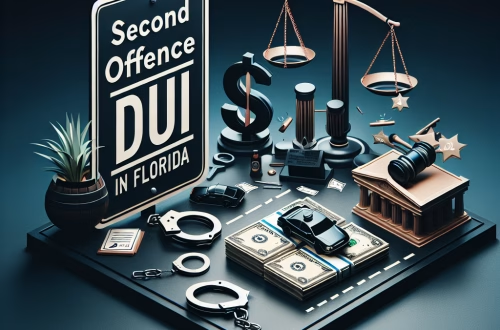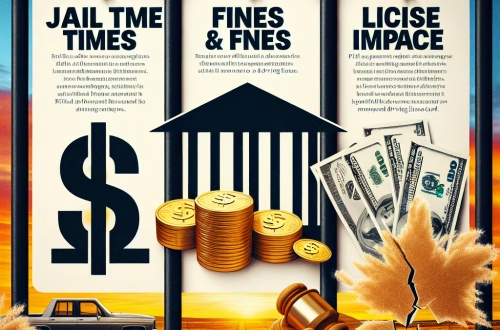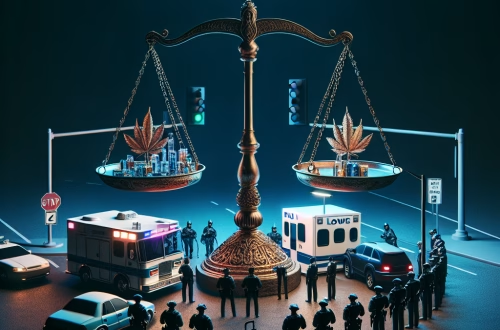DUI Causing Injury In California
Summary:
DUI causing injury in California (Vehicle Code § 23153) elevates impaired driving charges from a misdemeanor to a felony or “wobbler” offense with life-altering consequences. This statute uniquely impacts drivers, victims, and third parties by mandating prison sentences, substantial restitution, and multi-year license revocation. Individuals face mandatory sentencing enhancements for prior offenses, high BAC levels, excessive speed, or injury to multiple victims. Businesses employing commercial drivers or serving alcohol also risk vicarious liability under California’s dram shop laws. Legal challenges include navigating overlapping DMV administrative proceedings and criminal courts, preserving forensic evidence, and rebutting causation allegations between intoxication and injuries.
What This Means for You:
- Immediate Action: Invoke your right to remain silent and request a DUI-specialized attorney immediately. Contact the DMV within 10 days of arrest to request a hearing (VC § 13558(b)) to prevent automatic license suspension. Preserve all evidence, including witness statements and surveillance footage.
- Legal Risks: Convictions carry 3-6 years in state prison (Penal Code § 1170(h)), 3-5 years of probation, $390-$5,000 fines plus penalties, and restitution to victims. Aggravating factors (BAC ≥0.15%, refusal of chemical test, prior DUIs) add mandatory minimums. Multiple injured victims may lead to consecutive sentences under Penal Code § 1170.1.
- Financial Impact: Expect $15,000-$45,000 in criminal fines, $3,000/yr for 3 years of SR-22 insurance, $175-$400 for ignition interlock devices, $125 license reissue fees, and restitution for victims’ medical bills/lost wages. Civil lawsuits may result in six-figure judgments not dischargeable in bankruptcy.
- Long-Term Strategy: Pursue expungement after probation completion (Penal Code § 1203.4) to mitigate employment barriers. Apply for a restricted license after completing 12 months of suspension and DUI school. Document completion of 18-30 month substance abuse programs (Health & Safety Code § 11837) to demonstrate rehabilitation.
Explained: DUI Causing Injury In California:
Under California Vehicle Code § 23153, DUI causing injury occurs when a driver (1) operates a vehicle while under the influence of alcohol/drugs or with a BAC ≥0.08%, and (2) concurrently commits an illegal act (e.g., speeding, illegal turns) or neglects a legal duty (e.g., yielding), (3) directly causing bodily injury. Unlike simple DUI (VC § 23152), prosecutors must prove causation between impairment and collision. Federal law (34 U.S.C. § 20141) requires states to enforce mandatory minimum penalties for DUI with injury as a condition of receiving highway funding.
California recognizes “general intent” for VC § 23153 charges—prosecutors need not prove intent to cause harm, only that impairment and negligence were substantial factors in injuries. Injuries range from minor (bruises, whiplash) to “great bodily injury” (broken bones, brain trauma per Penal Code § 12022.7), triggering 3-6 year enhancements. Loss of consciousness or hospitalization ≥24 hours qualifies as “serious bodily injury” under 18 U.S.C. § 1365, permitting federal prosecution in accidents involving interstate travel.
Types of DUI Offenses:
California preserves distinct charges for BAC-based (§ 23153(a)) and impairment-based (§ 23153(b)) DUIs causing injury, allowing dual charging. Commercial drivers face enhanced charges at ≥0.04% BAC (VC § 23153(d)). Minors aged 13-20 may be charged under VC § 23153 with a BAC ≥0.01% (VC § 23140). Drug-related DUIs require drug recognition expert (DRE) evaluations to establish impairment since per se limits only apply to cannabis metabolites under VC § 23153(e), which remains untested case law.
Offenses “wobble” between misdemeanors (single victim/minor injury/first offense) and felonies (prior DUI/GBI/multiple victims). Under VC § 23554, first-time misdemeanor convictions carry 5 days -1 year jail, while felony convictions under VC § 23560 mandate 90 days -4 years prison. Special allegations like causing injury to law enforcement (VC § 23558) or pregnant women (Penal Code § 12022.9) increase penalties by 3-5 years.
Common Defences for DUI:
Challenging causation remains pivotal—defense may argue injuries resulted from pre-existing conditions or victim negligence (comparative fault). Attack chemical test validity by proving improper calibration (Title 17 CCR compliance issues) or rising blood alcohol theory. Illegal traffic stops lacking probable cause (Fourth Amendment violations) may suppress evidence. In prescription drug cases, establish compliance with dosage instructions and lack of impairment.
Emergency defenses under VC § 40300.5 require proving driving was the only means to prevent imminent bodily harm. For passengers who sustained injuries while knowing the driver was impaired, assumption of risk may reduce restitution. If police failed to read implied consent warnings (VC § 23612), chemical test refusal cannot be used as evidence of guilt.
Penalties and Consequences of DUI Offenses:
First-time felony convictions carry 2-4 years state prison, escalating to 8 years with GBI. Three-strike offenders face 25-years-to-life under Penal Code § 667(e)(2)(A). Courts impose 3-5 years formal probation with mandatory DUI school (18-30 months), ignition interlock devices for 1-3 years, and $2,000-$5,000 in victim restitution fines. The DMV imposes 1-3 year license revocation (VC § 13352(a)(3)) and requires SR-22 insurance for 3 years post-reinstatement.
Collateral consequences include 2 points on driving records (VC § 12810), mandatory 120-day impound (VC § 14602.6), and firearm prohibitions for felony convictions (Penal Code § 29800). Professionals licensed by state boards (medical, legal, contracting) face automatic disciplinary actions. Non-citizens risk deportation under 8 U.S.C. § 1227(a)(2)(A)(iii) as crimes of violence.
The DUI Legal Process:
Post-arrest, the DMV initiates administrative per se (APS) proceedings—file a hearing request within 10 days (VC § 13558(b)). At arraignment, defendants plead guilty/not guilty; bail is set per Penal Code § 1275. The prosecution shares discovery (police reports, blood tests) within 30 days. Key pretrial motions challenge stop legality (Penal Code § 1538.5) or injuries (HC § 123000).
90% of cases resolve through plea bargains—common reductions include wet reckless (VC § 23103.5) or misdemeanor DUI with injury. Trials focus on proving causation through accident reconstruction experts and toxicologists. Sentencing hearings address restitution under Penal Code § 1202.4, often involving victim impact statements.
Choosing a DUI Attorney:
Select attorneys certified by the California DUI Lawyers Association (CDLA) with 50+ jury trials. Verify expertise in challenging blood retests (Health & Safety Code § 100700) and DMV hearings. Prioritize firms with local courthouse relationships—Los Angeles and Orange County courts often impose harsher penalties. Avoid flat-fee structures; expect $10,000-$35,000 retainers for felony cases with payment plans for expert witnesses ($3,000-$7,000).
Other DUI Resources:
California DMV’s DUI portal (https://www.dmv.ca.gov/portal/driver-safety/dui-info/) outlines license penalties. Legislative text for VC § 23153: LegInfo.
People Also Ask:
Is DUI causing injury automatically a felony in California?
No—prosecutors file “wobbler” charges under VC § 23153 that may be reduced to misdemeanors for first-time offenders with moderate injuries (cuts, sprains). Felony filings require GBI, prior DUIs, or refusal to submit to chemical tests.
Can I avoid prison time for DUI with injury?
First-time offenders may receive probation with 180 days jail (split/converted to work release). Prison is mandatory for felonies with BAC ≥0.20% or repeat offenses within 10 years (VC § 23540).
How long will my license be suspended?
Administrative suspensions last 12 months (first offense) but obtain restricted licenses after 30 days with IID. Court-mandated suspensions post-conviction add 1-3 years—3 years minimum for injury to multiple victims.
Can the injured party sue me?
Victims routinely file civil suits for pain/suffering beyond criminal restitution. Minimum liability coverage is $30,000/person (VC §§ 16056, 16451), but judgments often exceed policy limits, exposing personal assets.
Will this affect my immigration status?
Felony convictions involving “crimes of violence” (GBI) or repeat offenses make non-citizens deportable. Misdemeanors may still violate “good moral character” requirements for naturalization.
Expert Opinion:
A DUI causing injury case demands urgent strategic intervention—prosecutors pursue maximum penalties when victims require hospitalization. Early retention of a specialized attorney ensures mitigation of sentencing enhancements and structured plea negotiations to avoid felony classifications. Post-conviction, proactive rehabilitation compliance remains critical for sentence reductions and professional license retention.
Key Terms:
- Felony DUI with injury California penalties
- Vehicle Code 23153 defenses for causing injury
- Blood alcohol content (BAC) legal limits in California
- DUI probation conditions and revocation
- California ignition interlock device requirements
- SR-22 insurance after DUI conviction
- License suspension duration DUI injury California
*featured image sourced by Pixabay.com





